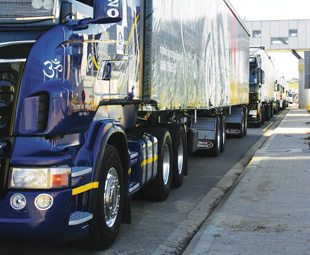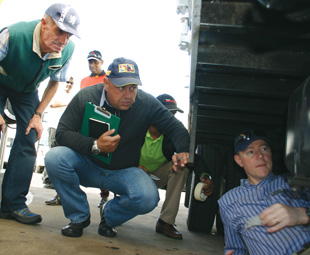Great expectations

Martin Dammann, MD of Hellberg Transport Management (HTM), one of organising partners of the Truck Test series, goes through the finer details of Truck Test 2015 and gives us his expectations for this year’s event.
With over 80 percent of the players in South Africa’s extra-heavy commercial vehicle segment (EHCV) taking part in Truck Test 2015 – entering some 16 vehicles – this will be one of the most representative tests, ever, of what is currently available to the market.
According to Dammann, it should also return some neck-and-neck results. “In 2012, we had fuel consumption and productivity differences of up to 15 percent. This year, I expect a difference of less than five percent between the vehicles. The overall performance of all the vehicles should be far more similar than the last time we ran 6x4s in 2012.”
There are numerous reasons for this. Dammann highlights the fact that each year the original equipment manufacturers (OEMs) are better prepared, as well as a unique point relating to Truck Test 2015 – the fact that all the gross vehicle mass (GVM) ratings and trailers used will be identical.
“The idea of having the same trailers and GVMs for the two categories will level the playing field considerably. In this regard, it’s great having AfriSam, Afrit and GRW on board, making it much easier for the OEMs to participate, as trailers and loads are not their core business.
 “OEMs will be making far more use of the live tracking information provided by Ctrack, mainly to monitor each other’s progress. With speed playing such an important role in the overall results, they’ll want to make sure they’re making the right decisions,” he continues.
“OEMs will be making far more use of the live tracking information provided by Ctrack, mainly to monitor each other’s progress. With speed playing such an important role in the overall results, they’ll want to make sure they’re making the right decisions,” he continues.
This time round, the 6x4s will run from Super Park in Jet Park, on Gauteng’s East Rand, to Komatipoort near the Mozambique border. The route starts at 1 700 m above sea level, going all the way up to around
1 900 m at Belfast and then down to 160 m (almost sea level) at Komatipoort.
“There’s also a mountain pass at Schoemanskloof, after Machadodorp, which will challenge even the most experienced drivers,” adds Dammann. “The route is also about 150 km shorter each way than the route between Johannesburg and Durban. This means it will be far more manageable to do all the travelling and refuelling in daylight, making it less stressful overall,” he says, noting that the current road works on the route should be complete by the time the test happens; allowing for a clean run.
Operationally, Dammann says that vehicles will be weighed on the TRAC N4 weighbridge near Middelburg, to double-check the weights taken when loading them at AfriSam. The truck tractors will also
be weighed empty so that tare masses can be compared to the manufacturers’ specs … “quite often a controversial point,” he says.
As is standard practice in the Truck Test series, HTM’s TransSolve software will provide simulations of expected vehicle performance before the test, as well as corroborating the final results. “We’ll probably simulate at different speeds to see how driving technique will affect overall performance. We want to improve even more on our accuracy, and this time we’d like to add in vehicle specs as well,” notes Dammann.
In conclusion, he says: “This test is really relevant to the local market – we’re only testing equipment that is readily available to customers in South Africa. There’s nothing special that will optimise a vehicle’s performance in the test.”
Published by
Focus on Transport
focusmagsa




